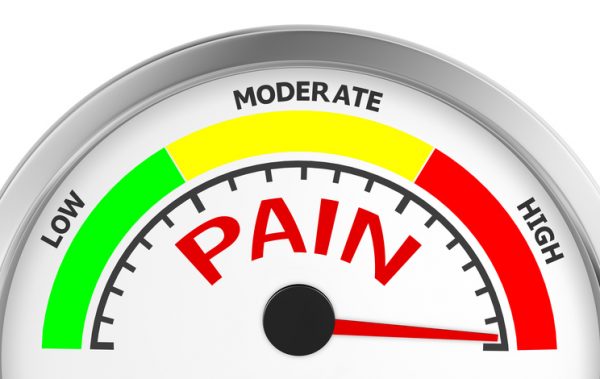
Employers are facing a mounting challenge to address chronic pain in the workplace. I am one of 50 million Americans who live in chronic pain, having experienced a rare nerve condition for nearly 10 years. New cases of chronic pain outpace diabetes, depression, and high blood pressure. Of those individuals, up to 40 percent of them are in the workforce. As a small business owner with health policy expertise, I am using my own journey to raise attention to this challenge, because without increased focus, the employer pain problem will grow exponentially in the coming years, having profound negative impacts on the U.S. economy.
Employees suffering chronic pain miss on average 10.3 workdays per year compared to only 2.8 days for those not experiencing pain. This equates to lost wages of $79.9 billion. Annual productivity costs to employers reach a startling $216 billion. Fewer large employers are self-funding their health benefits as they continue to see their costs increase, and the rise in the number of workers in chronic pain is partially to blame. U.S. health care costs for pain medications alone has risen to $100 billion a year and approximately $300 billion is spent on alternative therapies to address pain. These numbers do not even account for rising premium levels, specialty care, and other related health costs.

With the Rise of AI, What IP Disputes in Healthcare Are Likely to Emerge?
Munck Wilson Mandala Partner Greg Howison shared his perspective on some of the legal ramifications around AI, IP, connected devices and the data they generate, in response to emailed questions.
Beyond lost workdays, the impact of chronic pain on presenteeism is immense. Forty-two percent of workers in pain say they regularly experience loneliness, 64% are less likely to view their job as rewarding, and 28% are more likely to perceive discrimination at work. Chronic pain is also associated with increased levels of anxiety and depression. These challenges create work-related stress and have a negative impact on performance, productivity, and employee retention.
There is some acknowledgment by employers of their pain problem, but this awareness is not universal. A 2021 study found that managers have little knowledge of employee pain challenges and do not perceive they have a pain problem among their employees. The study surmised that employers may not be able to effectively discriminate between serious chronic pain issues and minor, temporary pain challenges. Yet an analysis by the Business Group on Health found that over 75% of employers consider musculoskeletal conditions (commonly associated with pain) one of their top three cost drivers and while many business leaders do recognize chronic pain is a concern, there is significant uncertainty in how to address it. This demonstrates a clear need for solutions that tackle not only health care costs, but absenteeism, the impact to presenteeism, and overall productivity.
Pain is not easily understood and tackling it is complex. And the healthcare industry has fallen short in addressing the chronic pain needs of millions. Surgical interventions for chronic pain have generally been ineffective and opioids are associated with poor outcomes and significant risks for most chronic pain sufferers.
Employers must take action to improve the productivity and lives of their workforces. Employers should advocate for:
- More employer-focused research. Limited chronic pain workforce studies exist in the U.S. yet understanding the overall social and economic costs are critical. Only with a greater understanding of the challenges can we start to chip away at them.
- Health care system changes. We know holistic care that addresses the biopsychosocial nature of pain is the best hope for chronic pain sufferers and payment arrangements should incent these approaches. Without a greater push by purchasers, employers will continue to pay more and get less.
- Catalog and replicate best practices. We need a central repository of information on how employers and their partners are innovating to address chronic pain in the workplace. Once cataloged, employers will be able to implement and test strategies that have been proven successful.
- Greater partnership & solution-focused collaboration. Employers have long engaged in health care policy and advocacy. We need a movement by employers to identify policy opportunities to activate change.
These action steps can create a much-needed movement. Let’s get started.
Photo – boygovideo, Getty Images
Mara Baer is a writer, speaker, and health policy consultant offering services through her women-owned small business, AgoHealth, LLC. She serves as a member of the National Pain Advocacy Center’s Science and Policy Council and has lived with Neurogenic Thoracic Outlet Syndrome or nTOS for over 10 years. She has also recently launched a chronic pain newsletter called Chronic Pain Chats.














